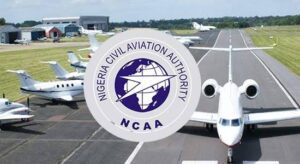
British Airways suffers multiple bird strikes at Lagos airport
By Peace Busari
A Boeing 777-300, registration G-STBE belonging to British Airways, performing flight BA-75 from Heathrow airport, London to Lagos, suffered multiple bird strikes on December 30, 2020.
A bird strike is a collision between an airborne animal and a vehicle, usually an aircraft.
The flight was on final approach to the Murtala Muhammed International Airport, Lagos’ runway 18R when the aircraft received a number of bird strikes in the flare causing a hydraulic leak.
However, the aircraft touched down safely, rolled out and vacated the runway and was taxing towards the apron when the aircraft lost nose wheel steering, hydraulic C system indicated zero quantity and smoke was seen from the main landing gear.
The crew stopped the aircraft on the taxiway.
Nigerian NewsDirect gathered that the crew declared PAN-PAN and radioed multiple times without emergency services responding.
The radiotelephony message PAN-PAN is the international standard urgency signal that someone aboard an aircraft uses to declare that they have a situation that is urgent.
However, despite radioing multiple times, it took 11 minutes after the aircraft landed for two firemen to walk out with portable fire extinguishers to help put out the smoke. A fire truck later arrived about 16 minutes after landing.
It was established that hydraulic fluid was dripping onto the hot brakes of the main landing gear causing the smoke.
The aircraft remained on the ground for about 10 hours until temporary repairs were completed, then departed for the return flight BA-74 and reached London with a delay of six hours.
The aircraft is still on the ground in London about four days after the bird strikes and about 54 hours after landing in London.
Meanwhile, a source within the fire service department confirmed that there was delay in responding to the distress call from the BA flight. The source however said that in most cases, the fire service department responds to emergencies based on priority.
An industry insider also revealed that bird strikes are very common occurrence at the MMIA and that most often, the reponse from the fire service department is not usually as swift as it should be.
According to the US Federal Aviation Administration, about 61 per cent of bird strikes with civil aircraft occur during landing phases of flight (descent, approach and landing roll); 36per cent occur during take-off run and climb; and the remainder (three per cent) occur during the en-route phase.


